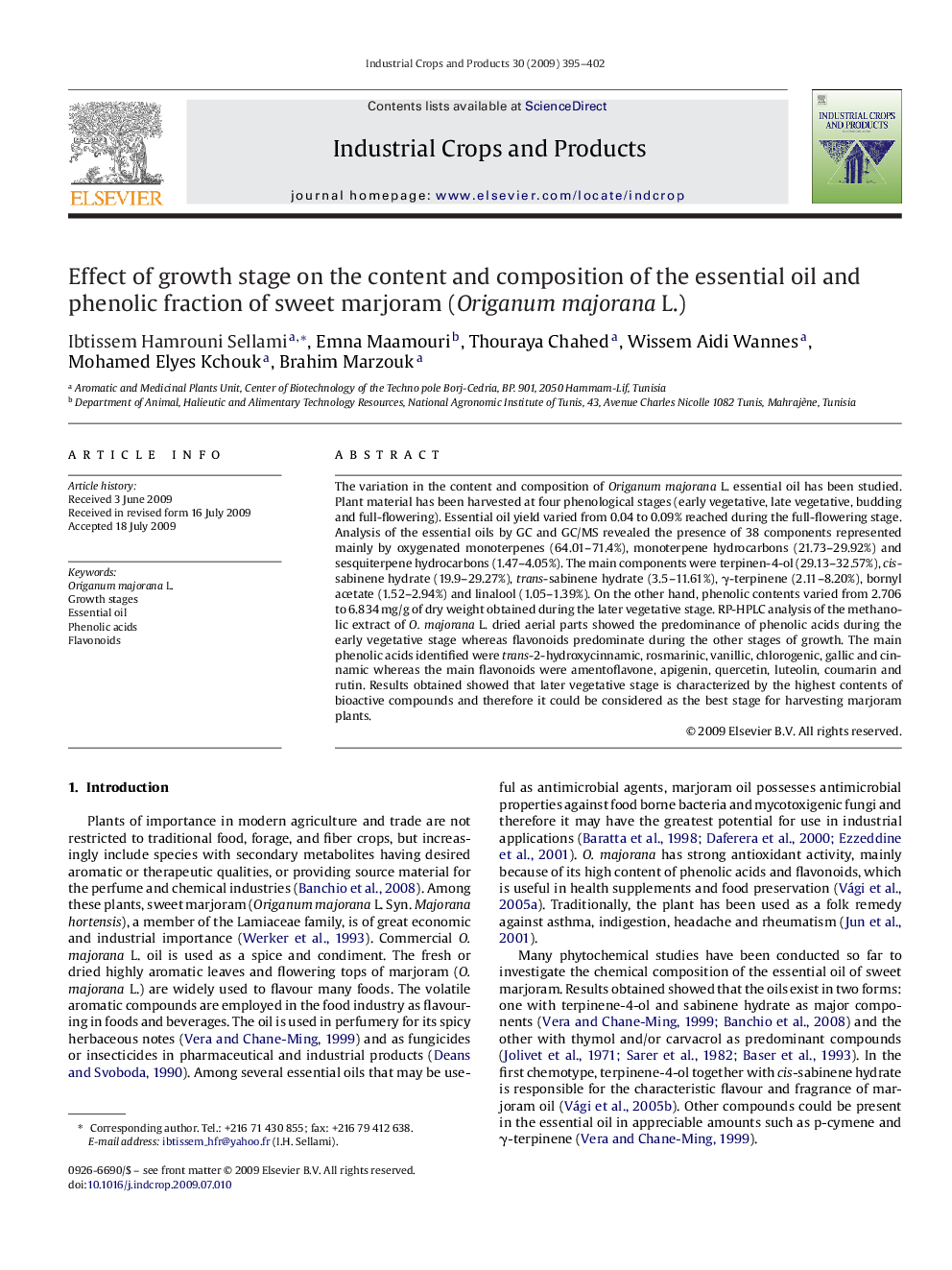| Article ID | Journal | Published Year | Pages | File Type |
|---|---|---|---|---|
| 4514844 | Industrial Crops and Products | 2009 | 8 Pages |
The variation in the content and composition of Origanum majorana L. essential oil has been studied. Plant material has been harvested at four phenological stages (early vegetative, late vegetative, budding and full-flowering). Essential oil yield varied from 0.04 to 0.09% reached during the full-flowering stage. Analysis of the essential oils by GC and GC/MS revealed the presence of 38 components represented mainly by oxygenated monoterpenes (64.01–71.4%), monoterpene hydrocarbons (21.73–29.92%) and sesquiterpene hydrocarbons (1.47–4.05%). The main components were terpinen-4-ol (29.13–32.57%), cis-sabinene hydrate (19.9–29.27%), trans-sabinene hydrate (3.5–11.61%), γ-terpinene (2.11–8.20%), bornyl acetate (1.52–2.94%) and linalool (1.05–1.39%). On the other hand, phenolic contents varied from 2.706 to 6.834 mg/g of dry weight obtained during the later vegetative stage. RP-HPLC analysis of the methanolic extract of O. majorana L. dried aerial parts showed the predominance of phenolic acids during the early vegetative stage whereas flavonoids predominate during the other stages of growth. The main phenolic acids identified were trans-2-hydroxycinnamic, rosmarinic, vanillic, chlorogenic, gallic and cinnamic whereas the main flavonoids were amentoflavone, apigenin, quercetin, luteolin, coumarin and rutin. Results obtained showed that later vegetative stage is characterized by the highest contents of bioactive compounds and therefore it could be considered as the best stage for harvesting marjoram plants.
